A former Portuguese colony, Macau was earlier known as ‘Ou Mun’ or ‘trading gate’ and was an important part of the silk route from China to Europe.
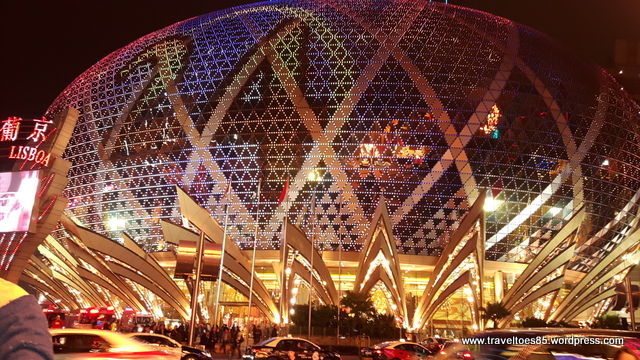
Presently though, it is the gaming capital of the world and its economy is fully dependent on the money that is brought in by the gaming industry. Gambling was legalized by the Portuguese in the 1850’s and following the liberalization of the gambling industry in the 1990’s, the Casino giants from Las Vegas have set up shop here, which is why it is popularly referred to as the Las Vegas of Asia.

In terms of the cash turnover however, Macau has overtaken Vegas, due of course to the gambling penchant of the Chinese people. The majority of the tourists who pour into Macau for their daily dose of weekend fun are from mainland China.

Unlike the Las Vegas strip, all the casinos in Macau are not lined up on the Cotai strip or close to it. Fortunately Casino shuttles are free and ply frequently between the casinos on Macau Peninsula and Cotai Island.
Getting to Macau from Hong Kong
The Turbo Jets take you from the Hong Kong ferry terminal to Macau in an hour. Economy tickets cost HK$254 for a one way trip. Passengers have to reach the boarding gate 30 mins prior to sailing time. Most hotels in Macau have a pick up point for guests from the ferry terminal.
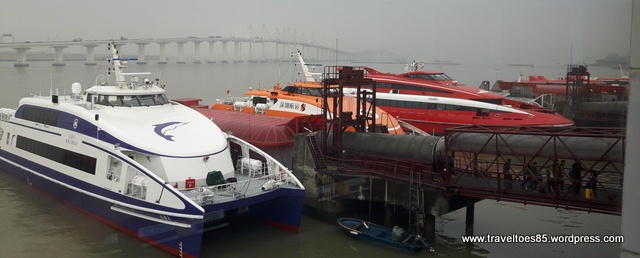
Casinos
We treated the casinos as a tourist attraction (which I suppose they are) and visited some of them to get a close up view of the glitz and glamour inside. Not only did we come away bedazzled but also more than a little overwhelmed by the ostentatious display of wealth.

The Grand Lisboa’s – As the plurality suggests, there are two of them – the new and the old. At the former, we teased lady luck a bit (and got teased in return) as we dabbled in Russian roulette and the slot machines. The old Grand Lisboa hotel (where we stayed) has a casino wing that is entirely done up in black and gold. The VIP rooms (most casinos have them) are heavily guarded and if you see two hotel staff lugging a heavy bag behind a dapperly dressed Asian gentleman, you can be sure the bag is full of hard cash. Yeah I know, I thought this happened only in gangster movies too;)

Both the Lisboas are something of a landmark in Macau. They can be seen for miles across, especially at night when thousands of LED lights illumine the huge lotus shaped exterior, rather like being in the middle of an ongoing carnival. The lobbies are lined up with expensive Jade figurines, crystal chandeliers and mirrored surfaces that reflect the bling back a hundred times. If you have shades, wear them.

The Wynn looks exactly like its parent in Las Vegas, except in Macau, the modern design is thrown into sharp prominence when compared to the flamboyant Lisboa right opposite. Thankfully with no LEDs to mar its surface, it manages to retain its classy look. To add to its attraction, there’s a ‘Light and Water Show’ at its Performance Lake every night.
MGM Hotel again made to look like the one in Vegas, has a glass surface that reflects the blue of the sea and sky. Drove past in our tourist bus so could not check out the inside.
The Venetian Macau is the one to definitely visit. Supposed to be larger in area than its Vegas counterpart, you can find everything here from the largest Casino in the world to a replica of the Venetian Canal with gondolas and hold your breath – serenading gondoliers (who suspiciously looked anything but Italian.)
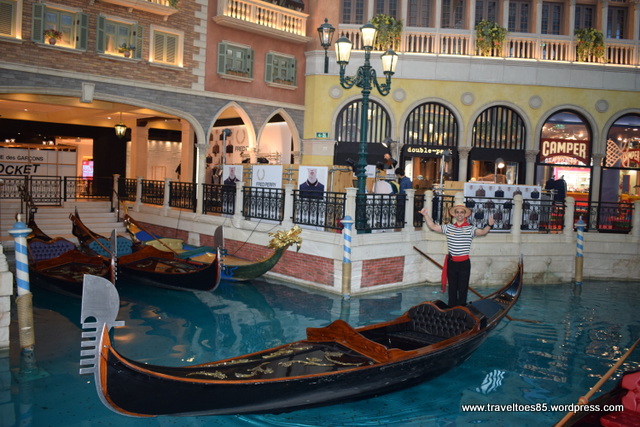
The Venetian also has an extensive (and predictably expensive) shopping arcade. Since its inception the Venetian has veered towards being an entertainment venue. A couple of big stars who have performed here are Beyoncé and Lady Gaga.

City of dreams mainly caters to die hard gamblers. But it does have three famous hotels within its complex – the Grand Hyatt, Hard Rock and Crown Tower, plus this is where the popular water show ‘House of Dancing Water’ takes place.

Galaxy Macau has an exterior and interior that caters exclusively to Asian taste. Even the restaurants here are Asian themed. Apart from its namesake hotel, it also has the Okura and the Banyan tree hotels.

The Parisian Macau is the newest one on the block and has a half size model of the Eiffel Tower on the outside. The architecture is French (but of course), hence stylish and opulently classy.

Studio City has a boulevard of shops showcasing worldwide brands. Besides the casinos, three ongoing shows are the signature attractions here – The golden reel, the batman dark flight show and the House of Magic show – which all come with a ‘Dine and Show’ experience. We attended the house of magic show that cost HK$480 each but it was worth every penny.
The Grand Emperor – has a gilded carriage permanently parked outside and makes for a great photo prop. Inside, everything that glitters is really gold.

The entrance has 78 pure gold bars (1 kg each) enclosed in glass and lined up on the floor. You can really walk over the gold and gawk to your heart’s content.

There is a British theme followed in the hotel starting from the Buckingham Palace look-alike guards standing outside (they even have change of guards) to the paintings of English royals inside. The hotel is owned in part by Jackie Chan and has six gaming floors.
A-Ma Temple
After checking out the casinos we visited the A-Ma temple. When the Portuguese reached the shore of Macau harbor in the 1550’s, they landed at the temple of A Ma or the Goddess of Seafarers.
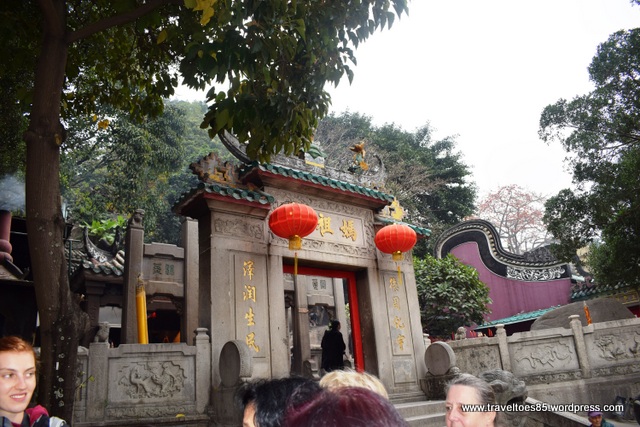
The locals called the place ‘A Ma Gao’ which means ‘place of A Ma’ and that’s how Macao got its name. Christian missionaries later built churches around this temple and the area around it came to be known as the Senado Square.

Senado Square
Senado Square has Portuguese tiled cobbled streets that immediately appealed to us. It is a delightful square with its churches, quaint shops and interconnected busy streets and effectively portrays the historical side of Macau.
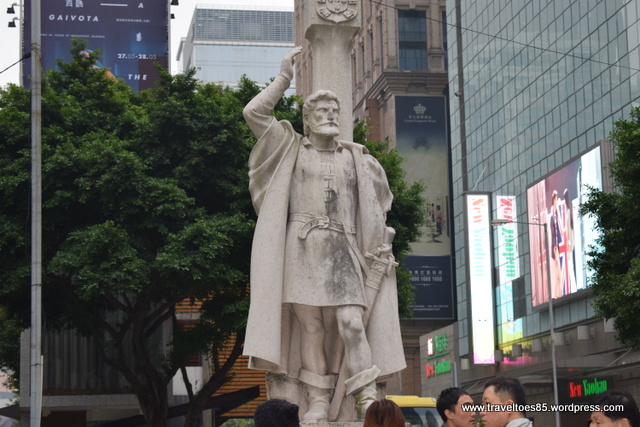
At the entrance to the square is a statue of Jorge Alvares, a Portuguese, who was the first European to reach China by sea.
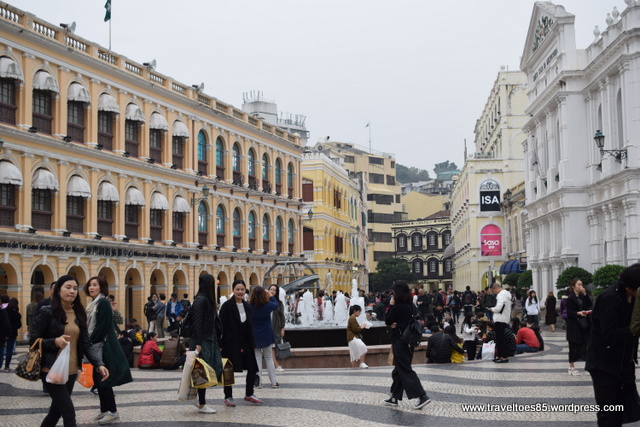
Towards the center of the square is the Friendship Statue depicting a Chinese girl handing over a lotus flower (the symbol of Macau) to a Portuguese boy.

The center of the square has a fountain with a seaman’s globe. Looks extremely pretty when lighted up at night.
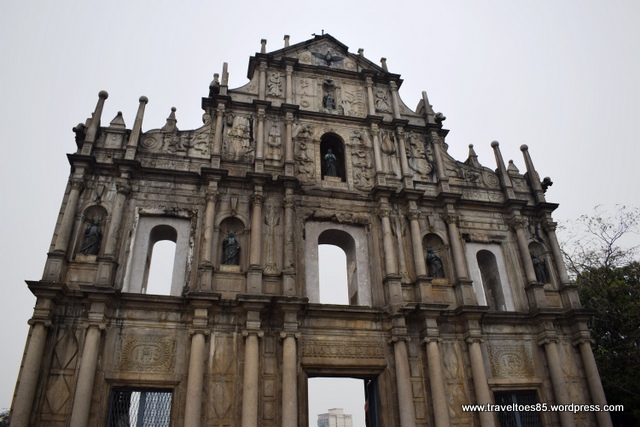
One of the most popular attractions on the square is the St. Paul’s Cathedral ruins dating back to the 16th century. It was destroyed by a fire in 1835 and is now an UNESCO heritage site.

Other churches within this area are within walking distance, one of them being the St. Dominic Church, built in the 1950’s by the Dominicans.

The historical confluence of the Portuguese and Chinese people can be best seen here with both the Christian churches and the Chinese temples existing in close proximity.

Macau Tower
At 764 ft., the bungee jump from the tower top is the tallest commercial jump in the world. It costs close to a whopping 4000 dollars to jump from the top.

Also includes a video and photos as proof of jump, plus a membership card, e-certificate and T-shirt.

The tower has 63 floors with restaurants, a convention and entertainment center and the observation deck. Entrance tickets cost $135.

Kun Iam Statue
Also known as the ‘Goddess of Mercy’, the bronze statue of Kun Iam stands at a height of 20 meters on the outer harbor and waterfront of Macau.

It stands on a lotus shaped base that houses the Buddhist ecumenical center.
Tips regarding guided tours
On the first evening we visited the casinos on the Cotai strip on our own and had no problem getting around. All hotels will provide tourist information and maps at the reception.
On the second day we took a guided tour but were not too happy with it. Our guide Mario seemed to have his own agenda. Instead of taking us to see some of the historical places of interest he wasted a lot of time taking us to a souvenir shop and a confectionary. Mario is Portuguese and knew his history well, but at times we found his explanations tediously long winded and repetitive.
Long story short, I would suggest reading the history of Macau on google, wikipedia and in guide books. To get around, use tourist maps, taxis and free shuttle buses. Explore Macau on your own without the restrictive schedule of a tourist guide. The experience will be much more satisfying.
https://traveltoes85.wordpress.com/































Not been to vegas but now no need to go to macau as well. U explain everything so well shaly
LikeLike
Thank you Gladys:)
LikeLike
Great post, if someone hasn’t been to Vegas, do you think they’d be disappointed in it if they went to Macau first?
LikeLike
I guess we’ll have to ask that question to the gamblers from mainland China…haha. Thanks for the comment though:)
LikeLike
Yeah the opulence indeed!
We’d sure like to tour the casinos!
LikeLike
Too much opulence…blinding in fact;)
LikeLiked by 1 person